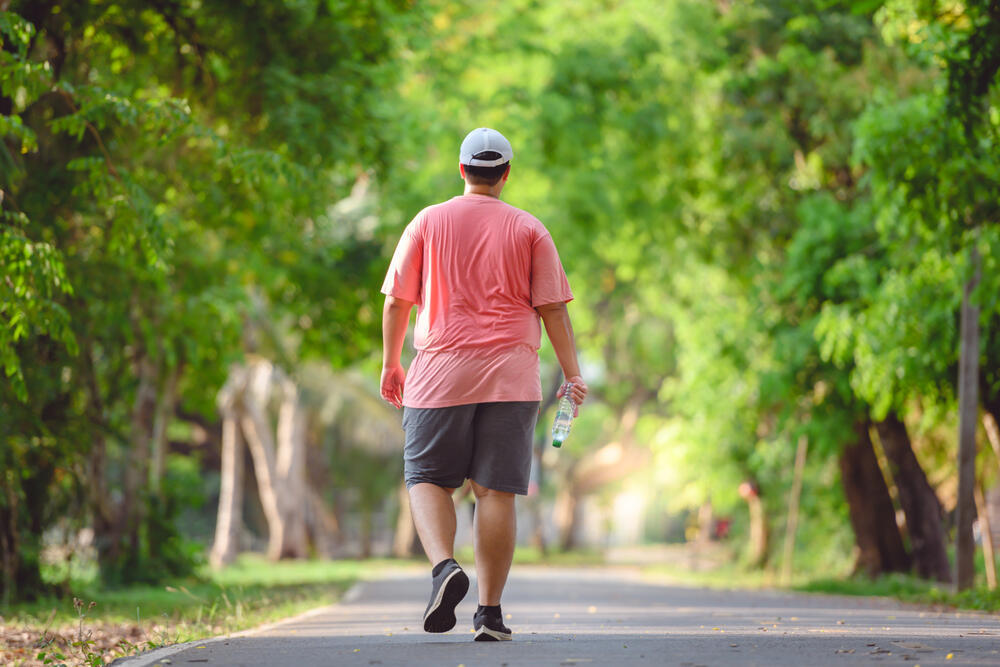Walking is an excellent physical activity for health and quality of life. It improves heart health, positively impacts sleep quality, may enhance mood, and can even extend life expectancy. One common question often asked by those who regularly go for walks is: When is it better to walk – before a meal or immediately after?
The decision about when to walk depends on your goals and preferences. Both options offer various benefits, including supporting weight loss and managing blood sugar levels.
Walking before a meal
According to the American Diabetes Association, walking on an empty stomach, either first thing in the morning or three to four hours after eating, can boost metabolism and help the body burn fat instead of recently consumed calories. Walking before eating can also promote weight loss by using fat stores as an energy source rather than glucose (sugar) from the last meal.
Research shows that individuals who exercise on an empty stomach burn about 70% more fat compared to those who work out two hours after eating. Walking before a meal also helps increase energy levels, improve blood circulation, reduce blood fat levels, and stabilize blood sugar levels.
Walking after a meal
Walking after eating can speed up digestion and reduce bloating. Studies reveal that for those with a history of gas, bloating, or belching, walking for 10-15 minutes after meals helps alleviate these symptoms.
The most significant benefit of walking post-meal lies in its effect on blood sugar levels. Whether you’re trying to prevent diabetes or have already been diagnosed with prediabetes or diabetes, walking after eating can help regulate blood sugar. Numerous studies have found that walking after meals allows glucose to move into active muscles, thereby lowering blood sugar levels.
Consistent walking promotes weight loss, regardless of the timing. However, older studies found that brisk walking for 30 minutes immediately after eating results in greater weight loss compared to walking an hour after a meal. Another study showed similar results, though it’s important to remember that weight loss ultimately depends on maintaining a caloric deficit — burning more calories through physical activity than consumed through food and drink.
How long before or after meals should you walk?
The timing of your walks depends on your goals. If you plan to walk before eating, ensure that three to four hours have passed since your last meal, or go for a walk first thing in the morning after an overnight fast. This way, your body burns fat as fuel instead of recently consumed calories.
Get the Ynetnews app on your smartphone: Google Play: https://bit.ly/4eJ37pE | Apple App Store: https://bit.ly/3ZL7iNv
If your goal is to walk after meals, start as soon as possible, especially if you’re looking to stabilize blood sugar levels or enhance weight loss efforts. Glucose levels peak 30-60 minutes after eating, so begin your walk before glucose levels reach their peak to help regulate blood sugar.
Walking tips to improve digestion
As mentioned, regular walking, regardless of the time of day, is beneficial for overall health. In addition to promoting better sleep and heart health, walking can improve mood and increase life expectancy. If you’re walking specifically to aid digestion, here are some tips to consider:
- Pay attention to what you eat: If you plan to walk before eating, be mindful of your food choices afterward. Studies show that people often choose less nutritious foods immediately after exercise, seeing it as a “reward” for their activity. However, it’s not necessary to eat right away. Research indicates you can wait up to four hours after exercising without negatively affecting glycogen stores.
- Do what you can: If a 30-minute walk after meals feels too challenging, especially if you’re not used to exercising regularly, walk as much as you’re able. Studies have shown that even a few minutes of walking can be beneficial for those who are not physically active.
- Avoid high-intensity workouts: Walking is preferable to high-intensity exercise after eating because of its gentle effect on digestion. For individuals with irritable bowel syndrome (IBS), high-intensity activities can exacerbate symptoms. The same applies to those with gastroesophageal reflux disease (GERD).
- Track your daily steps: If you’re walking to prevent diabetes or manage type 2 diabetes, aim for 9,000-10,000 steps daily. Tracking your steps can make it easier to reach this goal.
In conclusion, whether you choose to walk before or after meals, the key is consistency. Walking regularly provides numerous health benefits and can significantly improve your overall quality of life.
- Danny Zalewski is Director of Nutrition and Physiology at MALRAM- Preventive Medicine Unit at Sourasky Medical Center and Exercise Physiologist at Assuta Hospital




